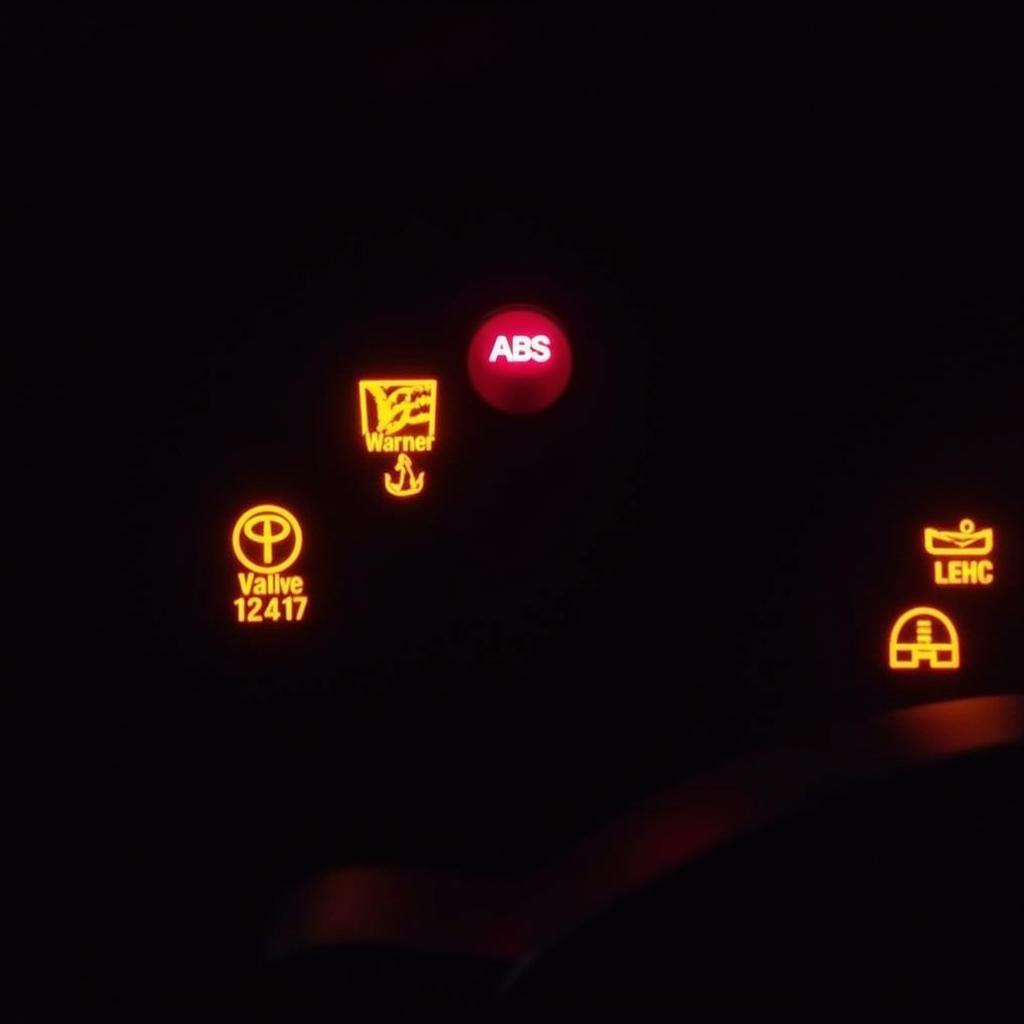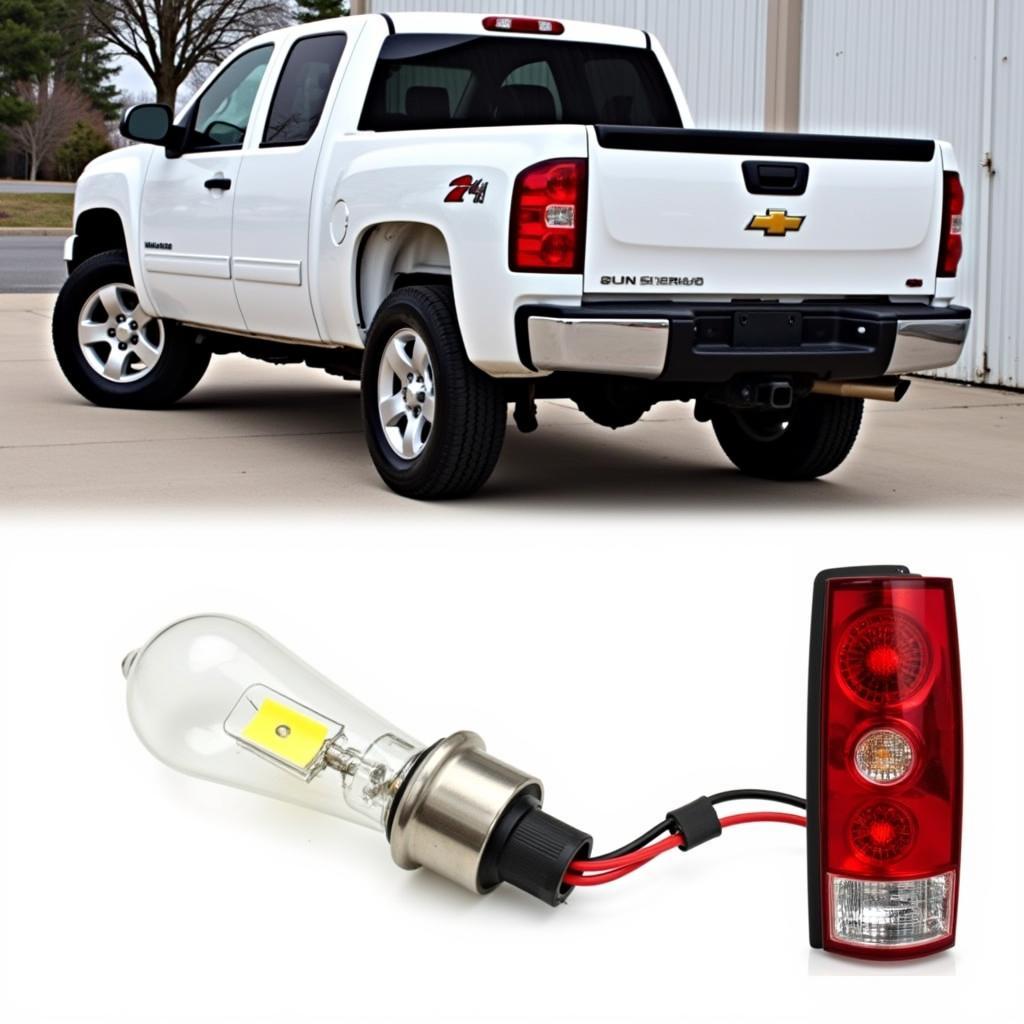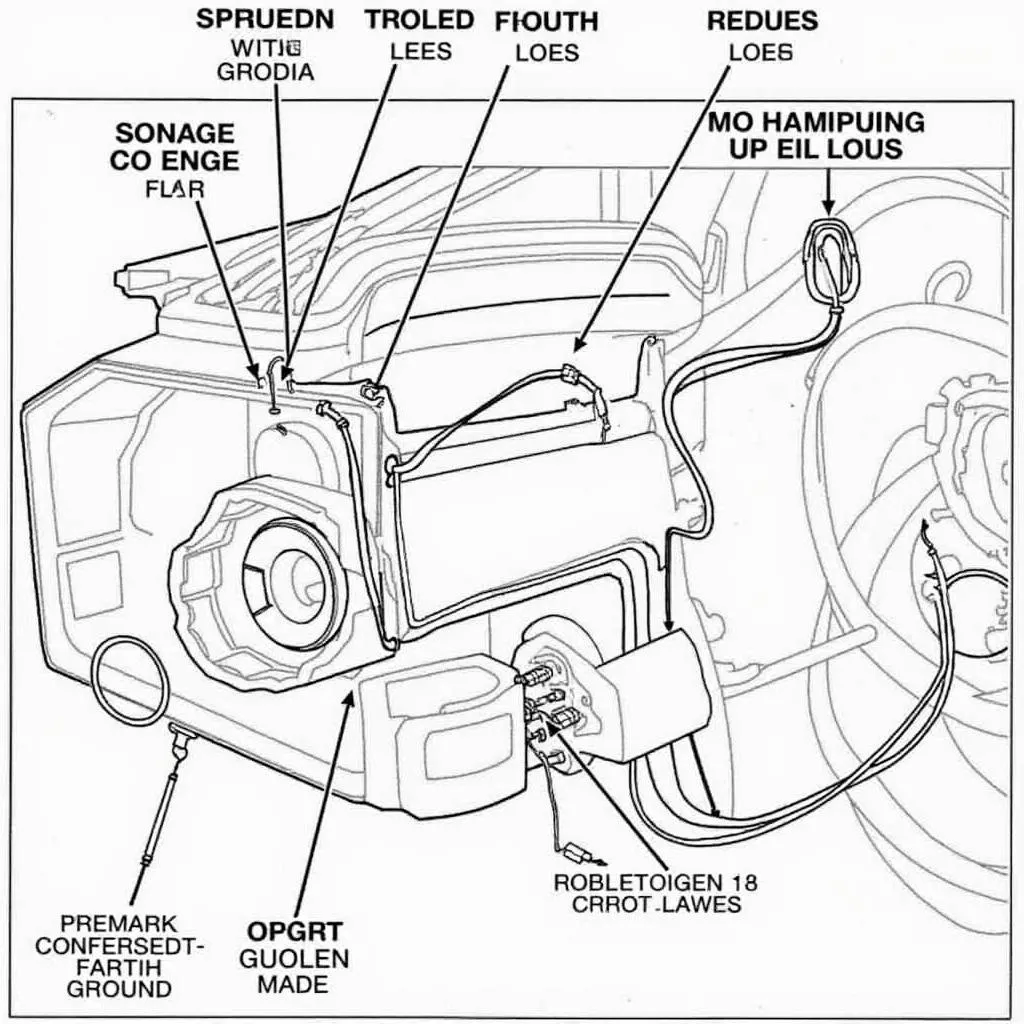Seeing a brake warning light illuminate on your Toyota’s dashboard can be unsettling. It’s a clear sign that something isn’t right and requires your immediate attention. While it might feel alarming, understanding the potential causes and solutions can help you address the issue effectively. This guide is designed to help you navigate through a Toyota brake warning on your screen, offering insights into its meaning and potential fixes.
Understanding Your Toyota’s Brake Warning System
Modern Toyotas are equipped with sophisticated braking systems designed to keep you safe. The warning light on your dashboard is a key part of this system, acting as an early warning signal. When illuminated, it indicates a potential issue that could compromise your braking performance. This warning light is linked to several components:
- Brake Fluid Level Sensor: This sensor monitors the brake fluid level in the master cylinder. A drop in fluid, often due to a leak, can trigger the warning.
- Parking Brake Switch: If your parking brake is engaged, even slightly, the warning light will activate as a reminder.
- Anti-lock Braking System (ABS): Your Toyota’s ABS helps prevent wheel lockup during hard braking. If the ABS system detects a fault, the brake warning light might illuminate alongside the ABS warning light.
- Electronic Brake-force Distribution (EBD): This system works in conjunction with your ABS, distributing brake force to each wheel for optimal stopping power. A malfunction within the EBD can also trigger the warning light.
 Toyota Dashboard Warning Lights
Toyota Dashboard Warning Lights
Common Reasons Your Brake Warning Light is On
Let’s delve into the common reasons why you might see a brake warning light on your Toyota’s screen:
1. Low Brake Fluid: This is one of the most frequent causes. Brake fluid is essential for transmitting force from your brake pedal to the brake calipers, activating the braking mechanism. If there’s a leak in the system, the fluid level drops, compromising your ability to brake effectively.
2. Worn Brake Pads: Your brake pads naturally wear down over time due to friction. Many Toyota models have wear indicators built into the brake pads themselves. When the pads reach a certain thinness, these indicators contact the rotor, creating a squealing sound and often triggering the brake warning light.
3. Faulty Brake Light Switch: The brake light switch is located near the brake pedal and activates your brake lights when you press the pedal. A malfunctioning switch can disrupt this signal, potentially causing both your brake lights and the warning light on the dash to malfunction.
4. ABS Sensor Issues: The ABS system relies on sensors at each wheel to monitor wheel speed. If a sensor gets dirty, damaged, or malfunctions, it can disrupt the ABS functionality and illuminate the brake warning light.
5. Issues with the Master Cylinder: The master cylinder is the heart of your braking system, responsible for converting the force from your foot into hydraulic pressure. A failing master cylinder can lead to various braking problems, including a lit brake warning light.
What to Do When You See the Brake Warning Light
If your Toyota’s brake warning light comes on, it’s crucial to take immediate action:
1. Safely Pull Over: Don’t panic, but immediately reduce your speed and find a safe place to pull over. Continuing to drive with potential brake problems can be dangerous.
2. Check Your Parking Brake: It might sound obvious, but ensure your parking brake is fully disengaged. Sometimes, even a slight engagement can trigger the warning.
3. Inspect Brake Fluid Level: If possible, carefully check the brake fluid level in the reservoir. If it’s low, adding brake fluid might temporarily resolve the issue, but it’s crucial to have a mechanic diagnose the source of the leak.
4. Listen for Unusual Sounds: Pay attention to any unusual noises coming from your brakes, such as grinding, squealing, or clicking. These sounds can indicate worn brake pads or other issues.
5. Contact a Qualified Mechanic: Unless you’re confident in your mechanical skills, it’s best to have a qualified mechanic diagnose the problem. Attempting DIY repairs on a critical safety system like your brakes can be risky.
Remote Diagnostics and Software Solutions for Toyota Brakes
In today’s technologically advanced world, remote diagnostics and software solutions are playing an increasingly vital role in automotive repair, especially for complex systems like brakes.
-
Remote Diagnostics: Some modern Toyotas are equipped with telematics systems that allow mechanics to remotely diagnose problems. This can be incredibly useful in identifying the root cause of a brake warning light, especially if it’s related to electronic systems like ABS or EBD.
-
Software Updates: Like any computer-controlled system, your Toyota’s braking system relies on software. Manufacturers frequently release software updates to address bugs, improve performance, and enhance safety features. Connecting your car to a diagnostic tool can reveal if a software update is available for your braking system.
Preventing Future Brake Warning Lights
While some brake issues are unavoidable due to wear and tear, proactive maintenance can significantly reduce their likelihood:
-
Regular Brake Inspections: Have your brakes inspected by a qualified mechanic at least once a year or more frequently if you drive in harsh conditions or frequently engage in heavy braking.
-
Timely Brake Pad Replacement: Don’t wait for your brake pads to wear down completely. Replace them as soon as you notice signs of wear or hear unusual noises.
-
Quality Brake Fluid: Use high-quality brake fluid that meets your Toyota’s specifications and have it flushed and replaced according to the manufacturer’s recommended intervals.
-
Address Leaks Immediately: If you notice any signs of a brake fluid leak, such as fluid spots on your garage floor or a consistently low fluid level, address the issue immediately.
Conclusion
A Toyota brake warning on your screen is a serious matter that should never be ignored. Understanding the potential causes, taking immediate action, and seeking professional help when needed are crucial for ensuring your safety and the longevity of your Toyota’s braking system. Remember, regular maintenance and prompt attention to warning signs are the best ways to keep your Toyota running smoothly and safely.
FAQs
1. Can I drive my Toyota with the brake warning light on?
It’s highly discouraged to drive with the brake warning light illuminated. This indicates a potential issue with your braking system, which could lead to reduced braking performance or even brake failure.
2. How much does it cost to fix a Toyota brake warning light?
The cost of repair can vary significantly depending on the underlying cause. Simple fixes like replacing a brake light switch can be relatively inexpensive, while more complex repairs, like replacing a master cylinder or ABS module, can be more costly.
3. How often should I check my Toyota’s brake fluid level?
It’s a good practice to check your brake fluid level at least once a month. If you notice a rapid drop in fluid level, it’s essential to have a mechanic inspect your braking system for leaks.
4. Can I add brake fluid myself if it’s low?
While you can temporarily add brake fluid, it’s crucial to have a mechanic diagnose the reason for the low fluid level, as it often indicates a leak in the system.
5. How long can I drive with worn brake pads?
It’s not recommended to drive with worn brake pads. As soon as you hear squealing or notice a decrease in braking performance, it’s time to have your brake pads inspected and likely replaced.



